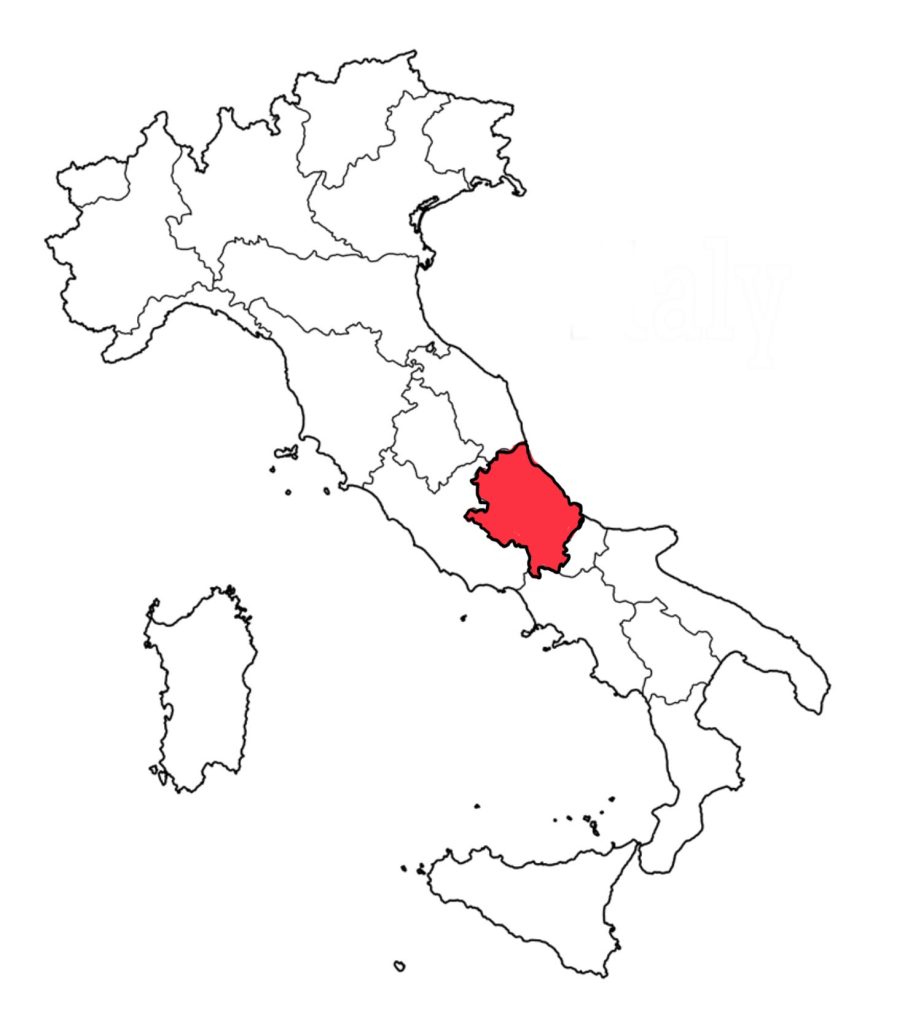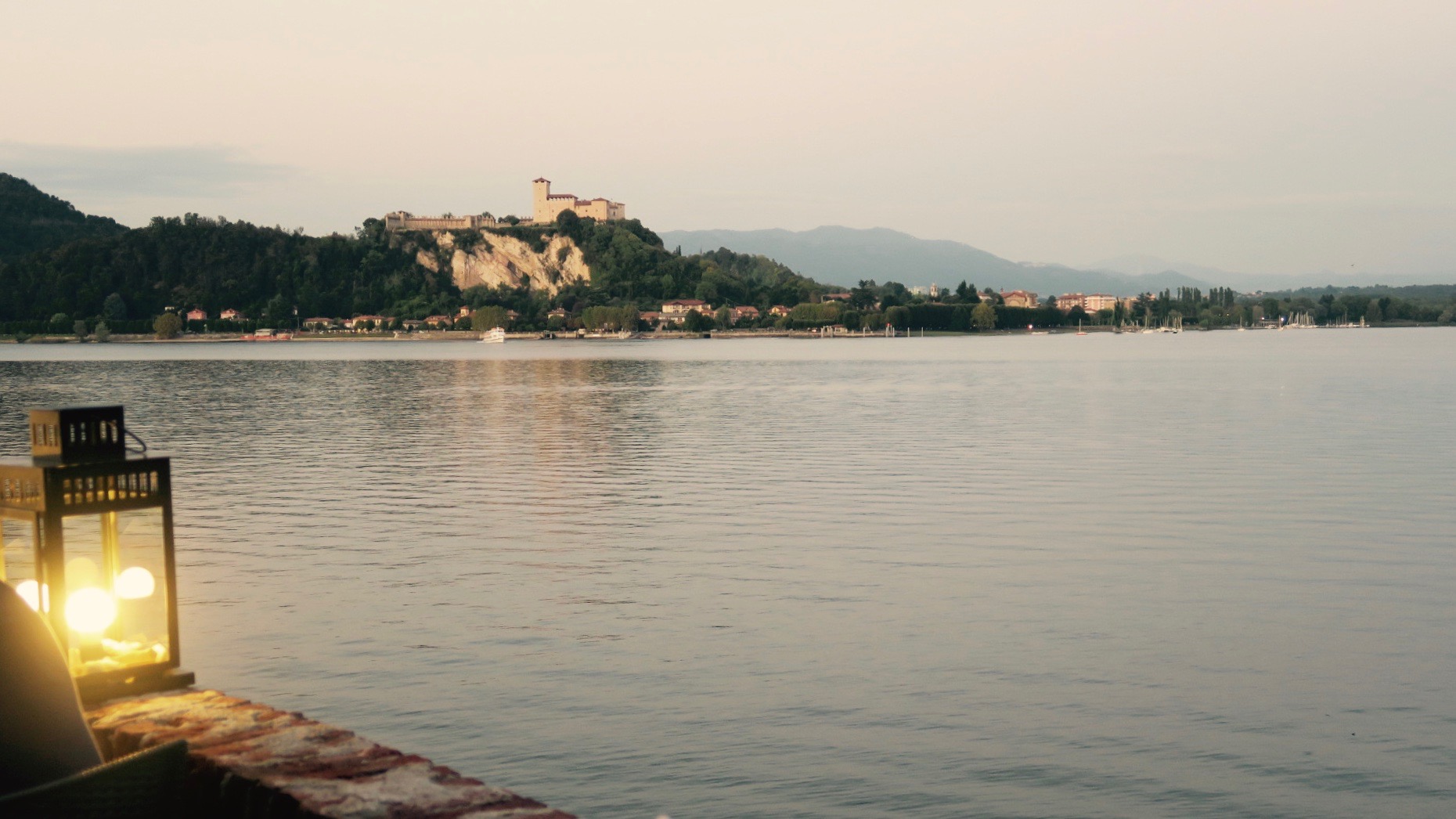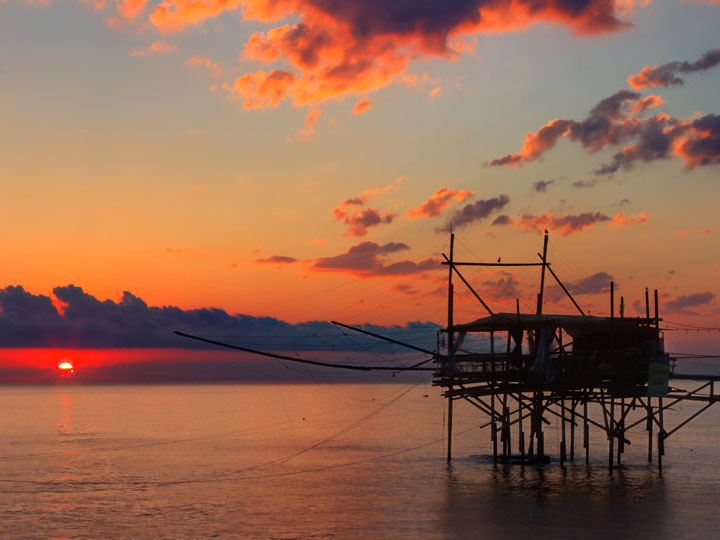Abruzzo, Forte e Gentile
It’s not surprising to me that I have taken so long to write about Abruzzo; in fact, I have no connection to this land, save the memories of a few summers spent in one part of this region with groups of high school students desirous not so much for their credit in the study of Italian as much as their three weeks of absolute adolescent freedom away from the stern and reproachful eyes of their parents.
I have invariably hesitated time and time again to visit this rugged and mountainous, ancient land; preferring many times to travel north or south of it, and never acknowledging until now, the deep seated fear I have of being inadequate in doing justice to a place so many of my closest and dearest friends hail from. Abruzzo is a land I know through others; through them I know its history, its culinary virtues, its natural beauties, its good people.
Abruzzo: Forte e Gentile.
Notwithstanding the apprehension, I decided this year would be the year I would visit Abruzzo.
I board a bus that will take me from Fiumicino to Torre dei Passeri. As it trundles along, my eyes bleary from lack of sleep, I pray I will like what I will find ahead. I hope that I might eventually be able to write enthusiastically about this region that my friends claim, is one of the most beautiful in Italy. It would be difficult otherwise, I surmise, to look them in the eye and agree with them that the most wonderful views, the best beaches, the most distinctive and delicious food is indeed all here in Abruzzo.
Waiting for me at the other end would be Maria, my Abruzzese DOC friend who will be my hostess, my guide, the Virgil to my exploration through Paradise. With that thought I fall into a solid and deep sleep.
I awake as the bus pulls to a stop at a solitary corner with a weathered bench sitting beneath a shelter. The bus driver brusquely announces we are in Avezzano. Not my stop. I remember that one of my favourite actors hails from this town. I open one eye and scour the area, just in case Lino Guanciale has decided to take a bus to somewhere at this very stop on this particular day and time.
No such luck.
I go back to sleep hoping this poor travel-ravaged body will soon arrive at destination.
My friends are already waiting for me. It is by now early evening. The brief ride to Capestrano takes us along a winding landscape bordered by high mountain ridges in the distance. As we leave the main statale road and begin to climb, I spy the turret of an ancient castle announcing proudly the town of Capestrano. We reach the summit and what will be home for a short while. The mountain air that greets me is crisp and reinvigorating. In the distance, beyond the castle’s turret, the rosy haze of the departing day pokes obstinately through gathering evening clouds.
It has been a long voyage, but through sleep-deprived eyes, I can still see a riveting landscape that invites me to explore. The old stirrings of anticipated excitement take root deep inside me. I am ready for a new adventure!


That evening, before a delayed, late supper (I will never get used to eating so late), we take the obligatory evening passeggiata to the town centre.

Here, in Piazza Mercato, on my left stands Santa Maria della Pace, the parish church. Disappointedly, the church is shielded by a grating, a network of steel tubing, which hides its façade. It is the first brutal reminder I see of the earthquake that devastated this region in 2009 and again in 2016.


On my right, stands the majestic Piccolomini Castle, with two cylindrical towers and an inner courtyard with an ancient well, which dominates from the top of a flight of stairs, the Piazza Mercato. As we enter we find before us a singular statue of a male warrior wearing a peculiar cylindrical hat. He stands sentinel bearing an axe and a sword. I’m told that in the mid 1930s, a poor farmer, while tilling his vineyard, found what would become the world-famous statue of the Italic Warrior of Capestrano. A brief iPhone search tells me the statue was probably a funeral monument of Italic king Nevius Pompuledeius (VI century BC), which is nowadays kept in the National Archeological Museum in Chieti. On both sides of him there are small columns, on one of which a mysterious inscription says “MA KUPRI KORAM OPSUT ANANIS RAKI NEVII”, which a scholar has translated as “me beautiful image made Ananis for king Nevius Pompuleius”. Beautiful and unique; this must surely be the symbol of Abruzzo.

We enter the inner courtyard of the castle, which is open to the sky and stars. The cobbled roughhewn ground and stone walls overtaken by moss, speak of a gloried past. Maria picks up a leaflet from the pile left on a little wooden table in a corner of the courtyard. She tells me that in a few days the annual Strano Film Festival will begin, that in its 2nd edition, will host 29 works in competition – including fiction, animation and documentaries – from as many as 18 countries around the world. The films will be screened free of charge right here, inside the Piccolomini Castle beginning at sunset.

I am intrigued by this ambitious endeavour and read through the brochure. It seems that the festival proposes to become an all-encompassing adventure dedicated to the culture of the land and to those who work here and those who live here. The goal is to transform this ancient village of Capestrano and the Valle del Tirino into a sort of wonderland in which one could immerse oneself, body and soul, through film and art, nature walks, guided tours, meetings and tastings in cellars and farms, connecting all those that visit…or just wander, to this spectacular territory. I am captivated by such an interesting initiative and happy to hear that we will be coming to the film screening the following evening.
The next morning we set out to explore the town–my guide and me. Capestrano lies in the heart of Abruzzo in the fertile valley of the Tirino river, on a hill at 500 m above sea level. Half of its territory is included in the area of theNational Park of Gran Sasso.
We return to the castello Piccolomini to see it by daylight and climb tentatively the time worn stone steps that lead up to the turret. As we reach the summit and take a first look, the heaving and laboured breathing from the climb halts in my throat.



Below me lies a green fertile valley rimmed with a ridge of mountain slopes that envelope the lowland almost lovingly; watching over it, protecting it from its own mighty roar that in the night comes furtively, unexpectedly to wreak havoc in paradise. It is a land at once docile and unspoilt and rugged and majestic at the same time. A paradox that presents a terrible beauty to those that behold it. Forte e gentile.
My friend speaks to me about this area, her land. She tells me that this valley below us is part of what is known as the Tratturo Magno or Regio. The tratturo is a wide grassy path, a valley which was originally the passage for the grazing and trampling of herds. It is a route made up of a complex reticular system of paths that wind and branch off into smaller paths of tratturelli that join together the main tratturi.1.http://www.leviedeitratturi.com/regio-tratturo-laquila-foggia-dalla-montagna-al-mare/ This one beneath us that coasts below Capestrano is part of the Tratturo Magno which begins in L’Aquila and transverses Abruzzo and Molise and reaches Foggia in Puglia. These paths were once used by shepherds for the seasonal migration of livestock between lowlands and adjacent mountains, and to transfer their herds from one pasture to another.
From the rocky crags of the Gran Sasso, the land dilates into vast green pastures that meet the horizon.

Maria gazes proudly with moistened eyes at her land. It is a land that has been made stronger by its misfortune; a land that still today pays a high price for its inimitable beauty.
Not many people know the beauty of this sacred land,— surely, a part of Italy off the beaten track.

0



